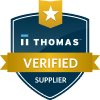Determining the Right Commercial Generator Size for Your Facility
For many commercial properties, especially medical facilities, schools, and data centers, ensuring uninterrupted power is critical. Whether it’s for keeping the lights on, maintaining security systems, or powering essential equipment, a reliable backup generator can save your business from costly downtime during power outages. However, choosing the right generator size is crucial to ensure your facility’s needs are met without overspending on unnecessary capacity. Here’s a guide to help you determine the appropriate generator size for your commercial property.
1. Assess Your Power Needs
The first step in determining the right generator size is to understand your facility’s power requirements. This involves identifying the essential systems and equipment that need to remain operational during an outage.
- List Essential Loads: Make a comprehensive list of all the equipment, systems, and devices that need to stay powered. This includes HVAC systems, lighting, security systems, computers, servers, refrigeration units, and any other critical machinery.
- Determine Wattage: Find the wattage requirements for each piece of equipment. This information is usually available on the equipment’s nameplate or in the user manual.
2. Calculate Total Power Requirements
Once you have the wattage for each essential load, calculate the total power requirement.
- Starting vs. Running Wattage: Some equipment, like HVAC systems and refrigerators, require more power to start (starting wattage) than they do to run (running wattage). Ensure you account for this difference to avoid under-sizing your generator.
- Add Up Wattages: Sum up the running wattages of all essential equipment. Then, add the highest starting wattage of any equipment to this total to get a rough estimate of your power needs.
Garrett Talbott, Duthie Power Sales Engineer for the Inland Empire, explains, “The best way to calculate generator size is to visit the customer’s location. A visit gives us the time to learn the items you’d want to back up during an outage so we can calculate the load and assess any geographical considerations for installation.”
3. Consider Load Type and Duration
Different types of loads and their duration of use affect the generator size you’ll need.
- Continuous Loads: These are systems and equipment that need to run continuously during an outage for safety purposes, like lighting, elevators and security systems.
- Intermittent Loads: These are loads that cycle on and off, like HVAC systems and refrigeration units. Ensure your generator can handle the peak loads when all intermittent loads might be operating simultaneously.
4. Understand Generator Types
There are different types of generators, and choosing the right one can also impact the sizing.
- Standby Generators: These are permanently installed and automatically kick in during an outage. They are typically sized for the whole facility’s needs.
- Portable Generators: These are smaller and can be moved as needed. They are typically used for smaller, temporary power needs.
5. Factor in Future Growth
When choosing a generator, consider the future growth of your business. It’s wise to select a generator with a slightly higher capacity to accommodate any potential increase in power demand without having to upgrade your generator.
“A good rule of thumb is the total power of the building should be about 30% of the generator’s output,” says Johnny Bradford, Duthie Power Safety & Quality Assurance Manager. “If you expect to add on to your IT capabilities or make facility enhancements that will draw more power over time, you will want to convey that to the professional assisting you with a new generator purchase and installation.”
6. Evaluate Fuel Type and Availability
The type of fuel your generator uses (diesel, natural gas, propane, etc.) can impact its efficiency and suitability for your facility. Ensure that your chosen fuel type is readily available and practical for your location and operational needs.
7. Account for Local Regulations and Standards
Ensure that your generator installation complies with local building codes, regulations, and industry standards. This can affect both the size and type of generator you choose.
Always Consult a Professional
While you can perform preliminary calculations on your own, consulting with an electrical engineer or a professional generator installer is highly recommended. They can provide a detailed load analysis and help you select a generator that meets your specific needs efficiently.
Duthie Power Sales Engineer for Orange County Mike Goodman, featured in the video above, explains, “The size of a generator is dictated by the customer’s load, and it varies depending on the customer’s requirements.”
“For example, at a healthcare facility, they may require an air conditioner, refrigeration, or power for a medical lab – it just depends on which items need uninterrupted power at all times.”
Onsite Visit to Measure Load
The most effective way to choose the correct size generator for your commercial property is to schedule an onsite visit with a generator expert who can talk you through every consideration, including a thorough assessment of your power needs, understanding different load types, and planning for future growth.
While you can start with basic calculations, consulting with a professional ensures you make an informed decision that provides reliable power backup during outages. Investing time and resources in selecting the appropriate generator can protect your business from unexpected power disruptions and keep operations running smoothly.
By following these guidelines, you can ensure that your commercial property is well-prepared for any power outage, safeguarding your operations and maintaining business continuity.
For more information on backup generator sizing, you can request a quote or give us a call at 1-800-899-3931


